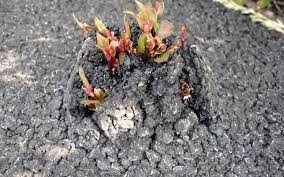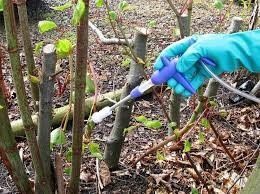Effective Japanese Knotweed Remediation & Treatment Solutions For Properties Based in Potters Bar & Serving North London and Surrounding Counties.
What is Japanese knotweed?
Identifying Japanese Knotweed
Japanese knotweed during the late spring
Reddish/purple shoots appear from the ground. These can grow up to 2cms a day so they can form dense strands of bamboo-like stems rapidly that develop green heart- or shield-shaped leaves.
Japanese knotweed during the summer
The mature Japanese knotweed stems are hollow with purple speckles and can reach up to 3 metres in height. The leaves alternate along each side of the stem, producing an obvious knotweed zigzag pattern.
Japanese knotweed by by late summer
The knotweed flowers are creamy-white in colour and appear in lengthy cluster/spike formations. Japanese knotweed spreads mainly from its underground rhizomes/roots which lie dormant, but alive, over the winter months.
Japanese Knotweed can sprout and produce active Rhizome, stem and leaf growth from as little 2mm piece of rhizome material. With this plant’s invasive nature, new growth can spread rapidly causing problems all too commonly known.
Legislation
It is not against the law to have Japanese knotweed growing on your premises, however if property owners fail to control the growth or it spreads from their premises to those of a neighbour, property owners can be fined £2,500.
An amendment to the Anti-social Behaviour, Crime and Policing Act 2014 includes invasive and non -invasive plants including Japanese knotweed.
Under the provisions made within Schedule 9 of the Wildlife and Countryside Act 1981, it is an offence to cause Japanese knotweed to grow in the wild.
The Environmental Protection Act (Duty of Care) Regulations 1991 state the Japanese knotweed is ‘controlled waste’ and must be disposed of into licensed landfill sites.
When buying and selling property, it is worth being pro-active in checking the property for Japanese knotweed to avoid disputes in the future. The Law Society TA6 Property Information Form was updated in February 2020 to put more pressure on sellers to declare whether their property is affected by Japanese knotweed. Mortgage lenders often require a formal Japanese knotweed management plan from a professional contractor in order to satisfy mortgage requirements.
We are certified Surveyors of Japanese Knotweed and Qualified Technicians offering a 10-year Guarantee following herbicide treatments completed.
Our Highly Effective Japanese Knotweed Removal Methods
- Herbicide treatments including spraying, injection and leaf wiping.
- On-site management which might include bunding, burial, barrier installation or herbicide treatment.
- Physical removal of Japanese Knotweed from the site for disposal to specific landfill centres.
- Continuous monitoring of the land during treatment visits.
- Up to date reports to the client keeping informed on the progress of our remediation works.
Japanese Knotweed Removal
Identify the plant, the extent of infestation and site conditions
Develop appropriate eradication strategy
Implement the eradication strategy
Monitor effectiveness of treatment implemented and completed








